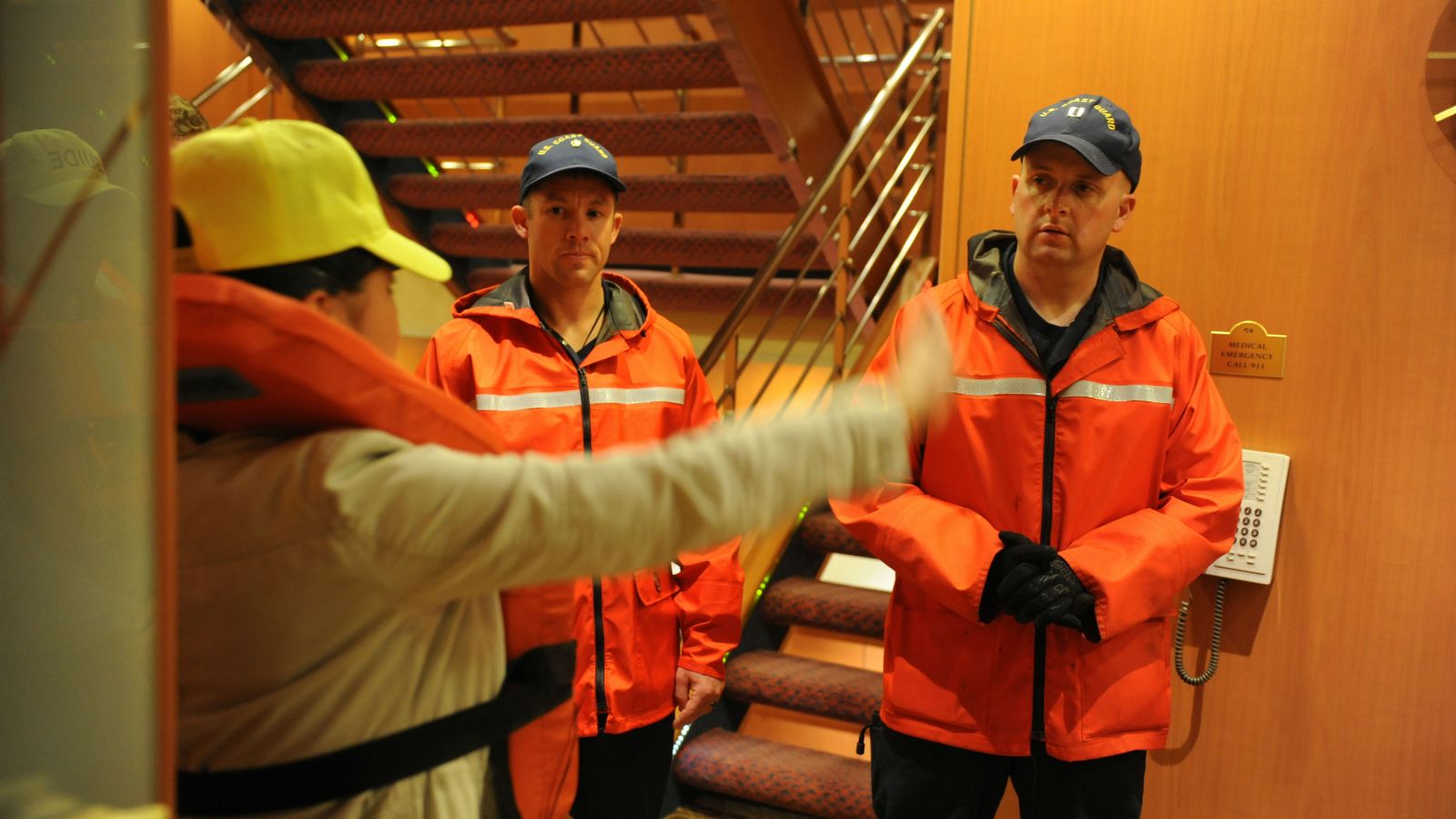Top 10 Cruise Ship Deficiencies of 2014

The U.S. Coast Guard has released a list of the top 10 cruise ship deficiencies issued in 2014. A total of 329 deficiencies were issued.
1. Fire Screen Doors not Operating Properly (31 occurrences)
The most frequent deficiency was fire screen doors were not operating properly. Fire screen doors were found to have damage to the sequencing bars, damage to the doors themselves or pressure differential between spaces on either side of the door causing them not to close properly. The majority of these deficiencies were corrected prior to the examiners finishing their exams.
2. Impeding Means of Escape (26 occurrences)
Corridors, doors and hatches in areas designated as escape routes were either partially or completely blocked. The majority of these deficiencies were corrected prior to the examiners finishing their exams.
3. Drills and Crew Training Issues (25 occurrences)
Various deficiencies were issued for problems associated with crew training and drills. The deficiencies included crews’ inability to operate fire suppression systems, crew problems with operating lifeboats and rescue boats and crews inability to communicate effectively during fire and abandon ship drills.
There were also deficiencies written for crews that did not have the required STCW training for Crowd Control Management and Crisis Management. The majority of these deficiencies were corrected prior to the examiners finishing their exams.
4. Problems with Lifeboats and Rescue Boats (21 occurrences)
Lifeboats, rescue boats and their associated launching appliances were found to be in deficient conditions. These conditions included davits not working properly, lifeboats not operating properly and missing equipment in both the lifeboats and rescue boats. The majority of these deficiencies were corrected prior to the examiners finishing their exams.
5. Improper Utilization of Categorized Spaces (17 occurrences)
There were several deficiencies issued regarding improper use of spaces. Space is at a premium on cruise ships and sometimes crews store combustible materials in spaces that do not have the adequate fire protection and suppression systems in the event of a fire. All of these deficiencies were corrected prior to the ship’s departure.
6. Problems with Fire Detection systems/Smoke Detection (13 occurrences)
There were several deficiencies written up for various problems with smoke detectors. The most common among these were smoke detectors not working during testing due to some kind of electrical or physical defect. Some of these deficiencies were corrected prior to the ship’s departure while other deficiencies were corrected given additional time.
7. Fire Suppression Systems (12 occurrences)
Various deficiencies were found in fire suppression systems. Sprinkler heads were in a deficient condition including bent or completely missing. Other issues included fire pumps not starting automatically and various issues with section valves and CO2 systems. The majority of these deficiencies were corrected prior to the examiners finishing their exams.
8. Issues with Pollution Prevention Equipment (nine occurrences)
These deficiencies included leaks in piping at bunkering stations, problems with the marine sanitation device and its associated piping/pumps and problems with the oily water separator and its associated piping. Cruise ships were giving time to correct some of these problems as several were unable to be completed prior to the end of the exam.
9. Emergency Lighting Issues (seven occurrences)
Low location lighting and photo luminescent tape designed to assist passengers and crew with locating emergency exits and means of escape were found to either not work properly or in the case of the photo luminescent tape, lost its reflective properties. The majority of these deficiencies were corrected before returning to the U.S. after sailing foreign.
10. Fuel and oil leaks (seven occurrences)
Numerous deficiencies were found in the engine room spaces. Most of these deficiencies were due to excessive oil leaks around the main engines, leaks in the oil purifier room and shaft seal leaks. Some deficiencies were corrected prior to the ship’s departure and other deficiencies were corrected by giving the crew additional time.
The original report is available here.
